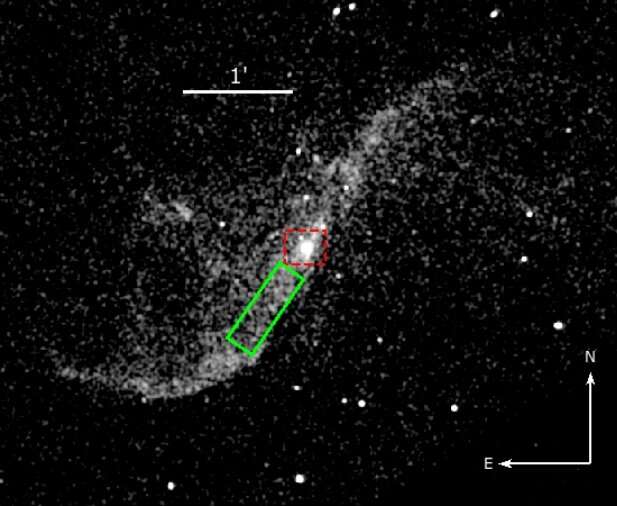Chandra ACIS-S 0.5–7.0 keV image of NGC 4258. Credit: Masini et al, 2022
By analyzing the data from four space observatories, European astronomers have presented a complete and thorough X-ray view of an active galactic nucleus in a nearby spiral galaxy known as NGC 4258. Results of the study, published May 16 on arXiv.org, shed more light into the nature of this galaxy.
Active galactic nuclei (AGNs) are accreting, supermassive black holes (SMBHs) residing at the centers of some galaxies, emitting powerful, high-energy radiation as they accrete gas and dust. These nuclei can form jets, having mostly cylindrical, conical or parabolic shapes, which are observed even on megaparsec scales.
At a distance of some 24.7 million light years away from the Earth, NGC 4258 hosts one of the closest AGNs. In 1984, water masers orbiting around this AGN were detected, making NGC 4258 the cleanest evidence for the existence of extragalactic supermassive black holes. Further investigation of these masers revealed a sub-parsec molecular, dusty disk in Keplerian rotation around a central mass of about 40 million solar masses.
AGN in NGC 4258 also interests astronomers due to its particularly low bolometric luminosity. They assumed that this could be due to either a low accretion rate, or a radiatively inefficient accretion flow. However, although several previous studies have examined the nature of the accretion flow in NGC 4258, it still remains puzzling.
Hence, a team of astronomers led by Alberto Masini of International School for Advanced Studies in Trieste, Italy, comprehensively reviewed the X-ray properties of NGC 4258 in order to shed new light on its accretion flow and long term evolution. For this purpose, they analyzed archival observations of this galaxy conducted with Chandra, Swift, NuSTAR and XMM-Newton space telescopes.
"The obtained results are then complemented with others from the literature (from ∼ 1993–2000) to obtain a complete and thorough X-ray view of a nearby under-luminous AGN spanning 23 years of observations," the researchers explained.
The study found that the X-ray properties of the AGN in NGC 4258 have changed through the years. The results suggest that this change was due to factor of two variations of the absorbing column density, plausibly associated with the dusty megamaser disk, and to intrinsic changes in the emission from the central engine.
The short variability timescale seen in the NuSTAR indicates that the variations might be due to changes in the accretion rate, in turn related to the rate of energy deposition in the corona. The astronomers noted that the accretion rate variability would also explain the long term decrease in intrinsic luminosity observed for this AGN.
Furthermore, the variations in photon index and luminosity seem to follow two behaviors. The first one is observed when the source is brighter than a certain critical value in X-ray-scaled Eddington ratio—then no apparent trend is seen. The second one was identified at a lower accretion rate as there appears to be an anti-correlation between the two quantities, which suggests a transition between hot and cold accretion states.
All in all, the authors of the paper concluded that the average spectral properties of NGC 4258 are typical of a low luminosity obscured type II Seyfert galaxy, with a photon index within the range of 1.6–2.2.
More information: Alberto Masini, J. V. Wijesekera, Annalisa Celotti, Peter G. Boorman, A comprehensive X-ray view of the active nucleus in NGC 4258. arXiv:2205.07899v1 [astro-ph.HE], arxiv.org/abs/2205.07899
© 2022 Science X Network
























